Project GIPF is a series of eight abstract strategy games designed by Kris Burm. Each game features a hexagonal playing area and involves a dwindling of either pieces or playing area mechanic. The way they approach these elements is not only unique, but combines what I feel are the best qualities in most abstracts: simple rules that reveal complex game play.
If you’ve never heard the games within Project GIPF, GIPF, TAMSK, ZÈRTZ, DVONN, YINSH, PÜNCT, TZAAR, and LYNGK, I encourage you to seek them out, either in cardboard and bakelite or digitally online. They are well worth your time.
Today’s game: YINSH
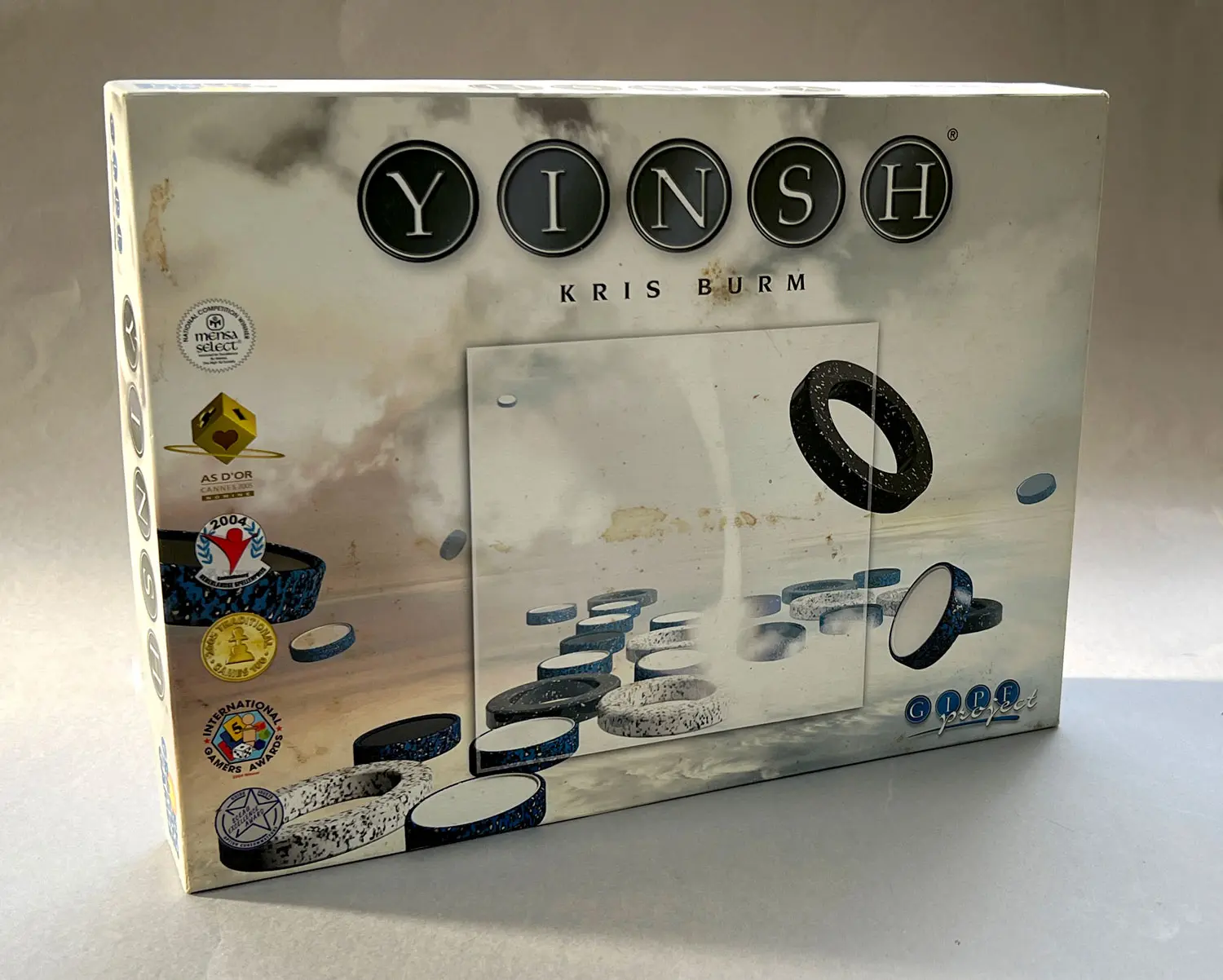
YINSH is a game about turning pieces over, from black to white or from white to black. And then back again.
If this sounds familiar, it’s because the main mechanic in YINSH dates back to 1883. That’s when two competing Englishmen each claimed to have invented a game they called Reversi. In the 1970s, Japanese salesman Goro Hasegawa made a subtle change to the game’s opening and patented his version of Reversi under a name you may be more familiar with: Othello.
Both YINSH and Othello feature discs that are black on one side and white on the other. In the course of a move, players will turn over pieces, leaving the opposite color in play. That, however, is where the similarities end.
Playing the Game
The playing field for YINSH is a six even-sided shape with the point on the outer edge where two sides meet is missing. You can think of this shape as six diamonds, laid side-by-side forming something of a circle. The triangular grid inside the board is made up of 85 intersections.
You’ll start YINSH by choosing to play as either black or white. You’ll then collect the five rings in your chosen color and place them on the board, alternating turns with your opponent.
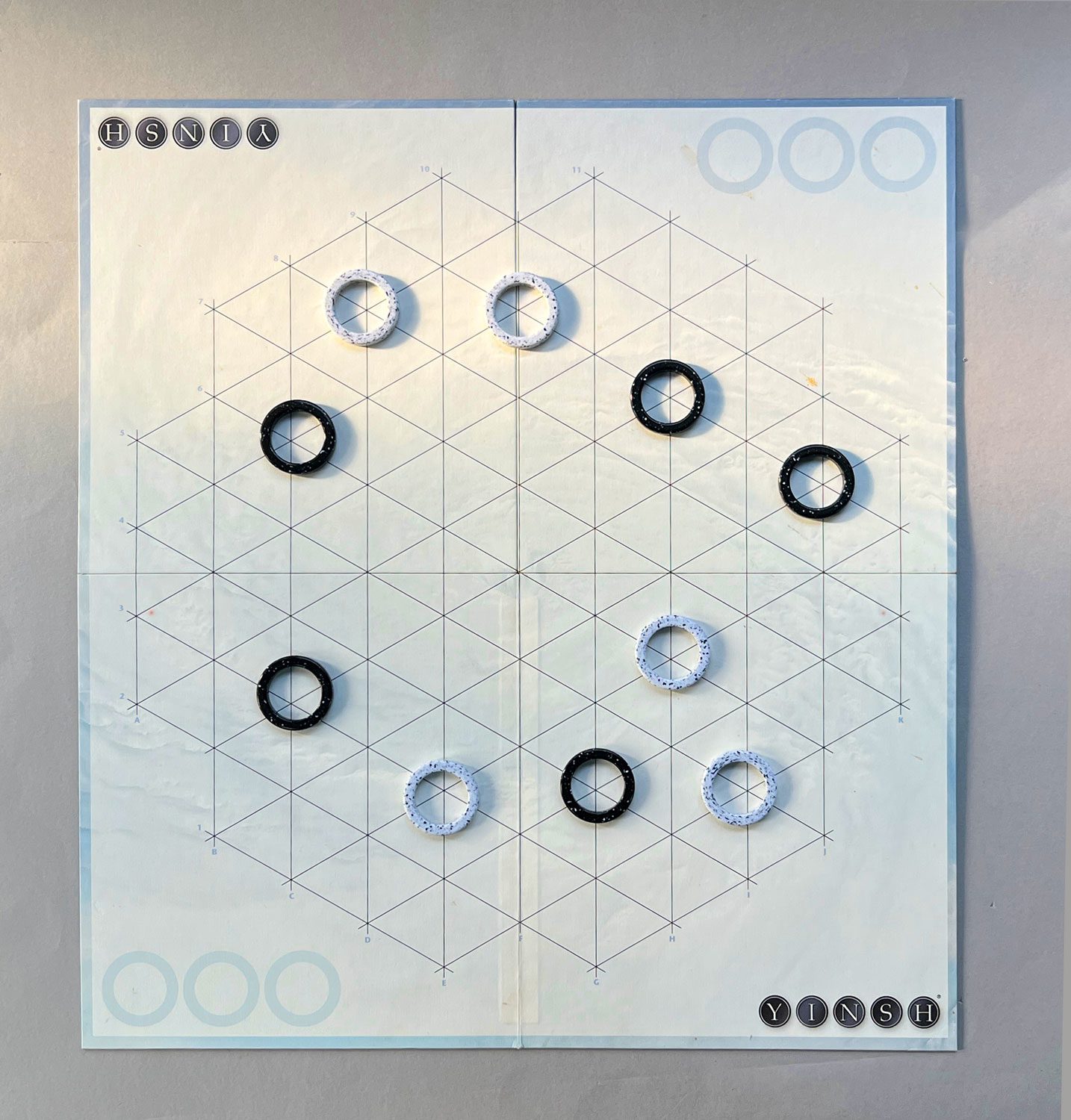
Still alternating turns, you’ll place one of the black/white pieces in the center of one of your rings with your color facing upward. (e.g., the white player can only place white pieces inside one of their rings.) You’ll then remove the ring, leaving the piece behind, and move the ring in a straight line to an unoccupied intersection.
When you move your ring, it cannot pass over any other ring, regardless of the color. Rings may pass over pieces, but they must land at the first open intersection after a piece or row of pieces. Then, you’ll turn over all the pieces your ring passed over to their opposite side/color. (The piece left behind where the ring started remains its original color.) On your turn, you may turn some of your opponent’s pieces over to your color, and turn some of your pieces to your opponent’s color.

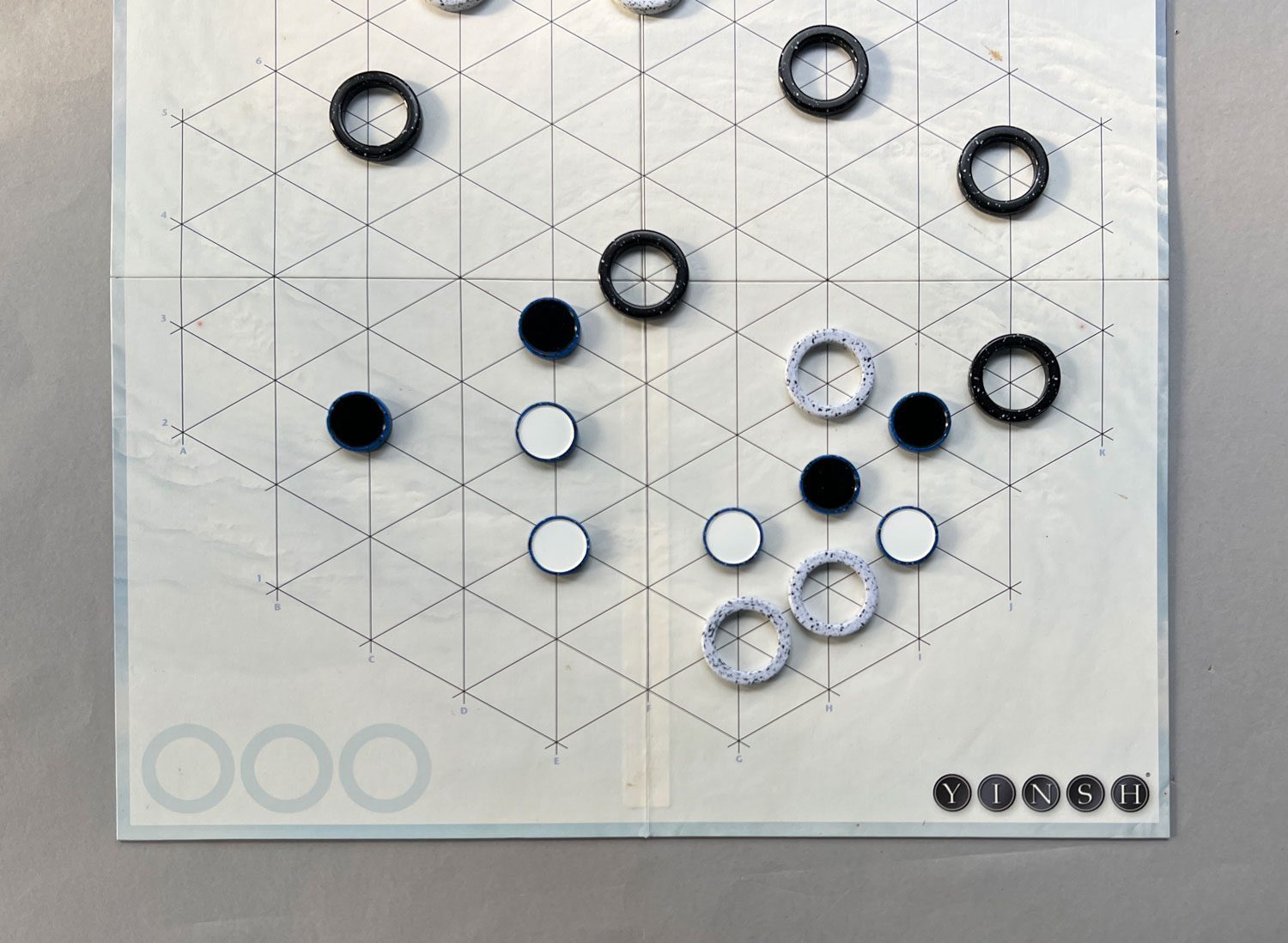
The object is to create an unbroken five-in-a-row of your colored pieces. When this is done, you will remove those five pieces from the board.
As with all the GIPF Project games, there is one small but vital rule that makes YINSH special. After removing the five pieces, that player also removes one of their rings from the board. This means with each five-in-a-row you create, you will have one fewer option for placing and flipping pieces. That will make it harder to form your next five-in-a-row. Or, put another way, the closer you are to winning, the harder it can be to win (or, just as importantly, not lose).
Be the first one to complete three five-in-a-rows and you win the game.
YINSH Thoughts
With so many intersection points on the board, it’s difficult to know where to start when placing your rings on the board. There are many online forums discussing YINSH strategies, and the consensus appears to be that there are no best opening positions. In general, you’re looking to create open paths for yourself while working to cut off access for your opponent. (An early strategy was to dominate an edge and create your own wall of pieces. However, later tournament play has shown this tactic to be flawed and beatable.)
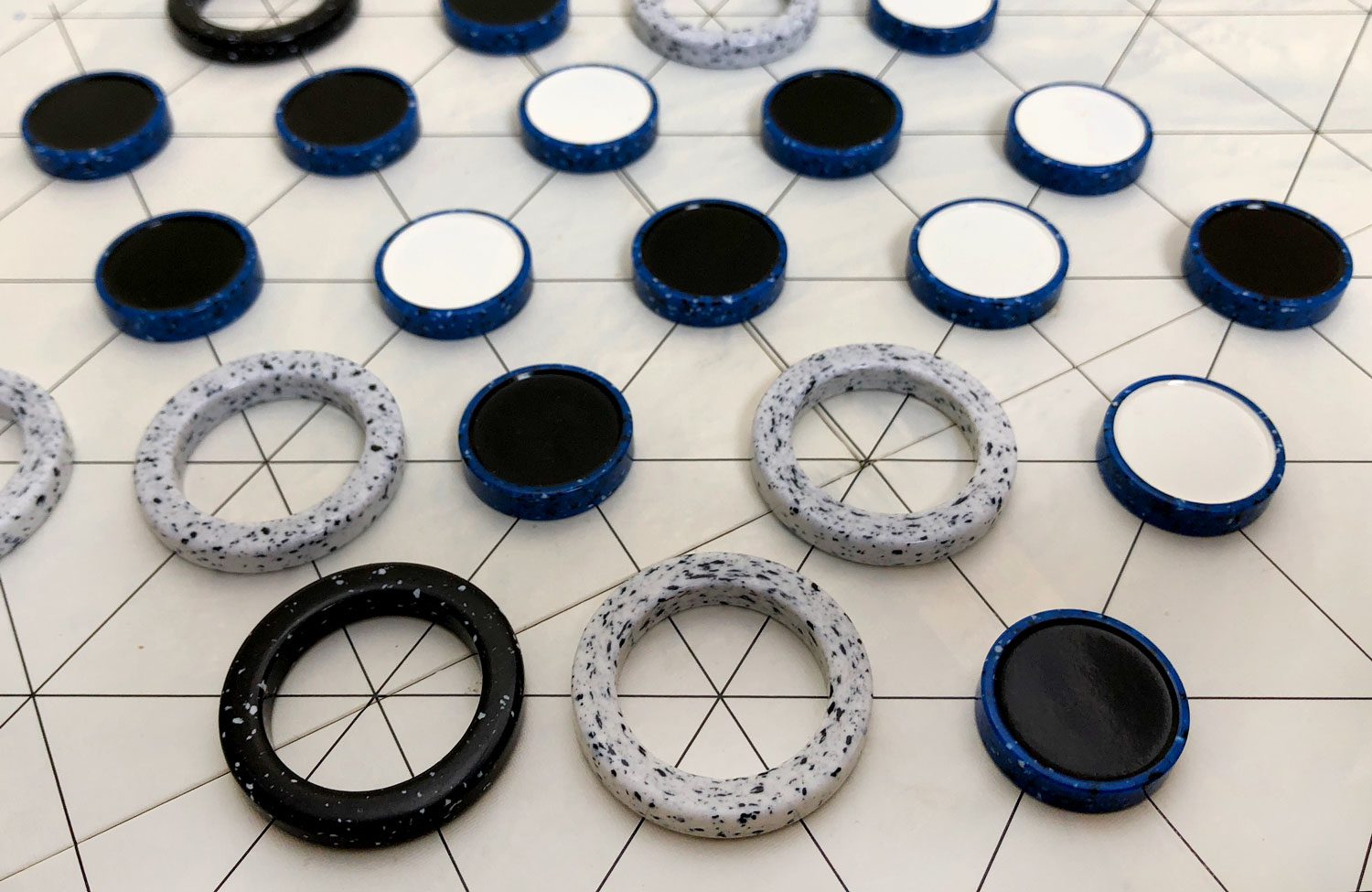
Although the pieces on the board may flip from color to color, they will remain static on the board until removed as part of a five-in-a-row. Remember, your rings are the only pieces that move. Therefore, it’s important to keep your attention on the rings—both yours and those of your opponent. You’ll want to keep your rings flexible and open to movement while trying to trap, or at least limit the options available to your opponent’s rings.
YINSH is quick to learn and quick to get players thinking. It’s another great game where, just a few moves in, new players get that “ah ha!” moment with the game.
As with all the Project GIPF games, I feel like I should be better at YINSH than I am. I am better than when I started, but the game still overwhelms me—I still cannot visualize the board several moves ahead. I am developing a better sense of controlling my rings.
YINSH is easy enough to teach to children, yet complex enough to challenge die-hard abstract players. It’s one of my favorites in the GIPF Project.
Here's a list of all Project GIPF reviews.



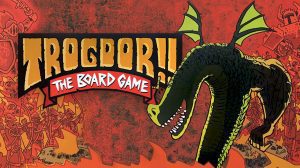
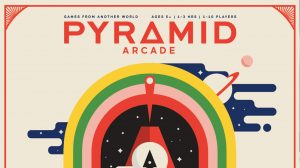

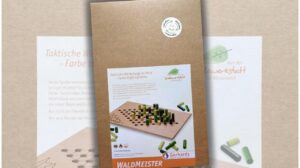




Add Comment